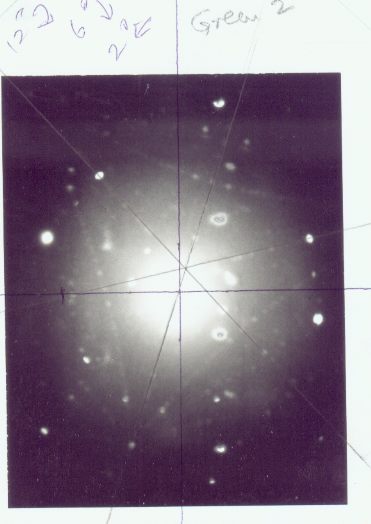
single crystals. White radiation is reflected from, or transmitted
through, a fixed crystal.
The diffracted beams form arrays of spots, that lie on curves on the
film. The Bragg angle is fixed for every set of planes in the crystal.
Each set of planes picks out and diffracts the particular wavelength
from the white radiation that satisfies the Bragg law for the values of d
and q involved. Each curve therefore corresponds to a different
wavelength. The spots lying on any one curve are reflections from
planes belonging to one zone. Laue reflections from planes of the
same zone all lie on the surface of an imaginary cone whose axis is
the zone axis.
| |
| |
| |
| |
| |
| |
| |
| |
and the transmission Laue method.:
In the back-reflection method, the film is placed between the x-ray source
and the crystal. The beams which are diffracted in a backward direction
are recorded.
One side of the cone of Laue reflections is defined by the transmitted
beam. The film intersects the cone, with the diffraction spots generally
lying on an hyperbola.
Transmission Laue
In the transmission Laue method, the film is placed behind the crystal to
record beams which are transmitted through the crystal.
One side of the cone of Laue reflections is defined by the transmitted
beam. The film intersects the cone, with the diffraction spots generally
lying on an ellipse.

